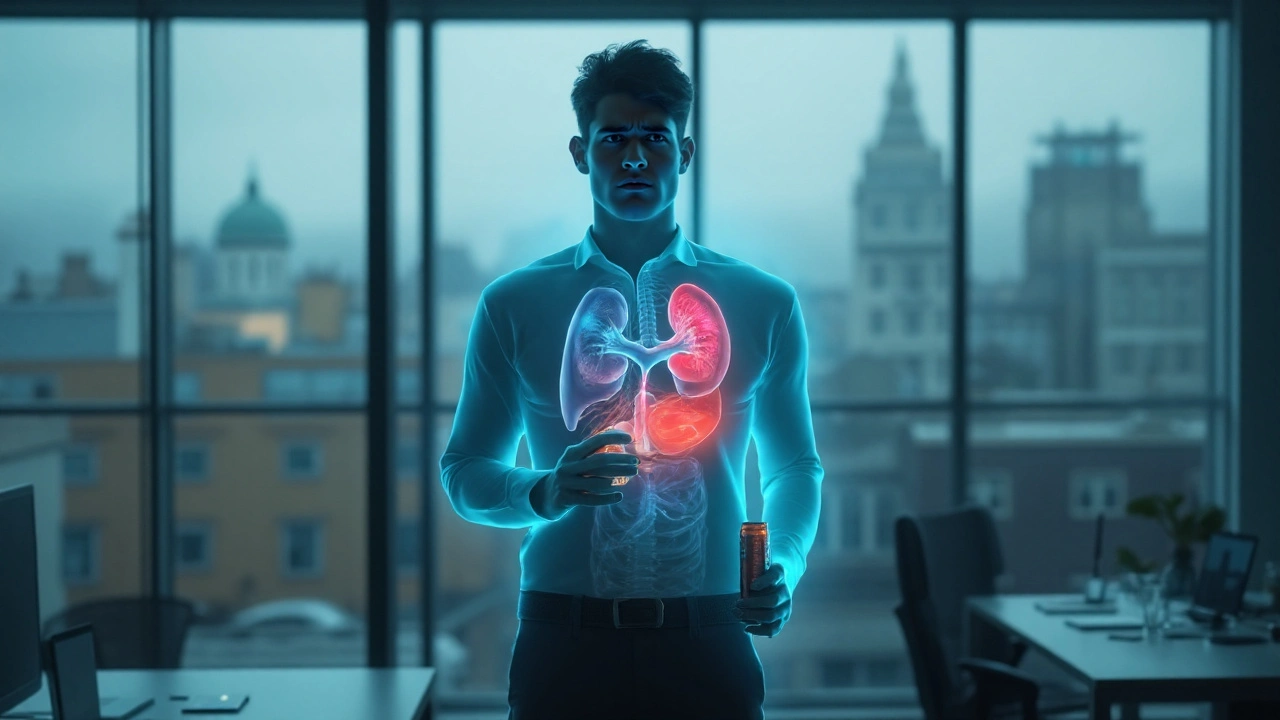Liver Toxicity and Energy Drinks: What You Need to Know
Energy drinks promise a quick boost, but many people ignore what’s inside the can. The liver works hard to break down caffeine, sugar, and a slew of additives. When you overdo it, the organ can get stressed, leading to liver toxicity. Here’s a plain‑talk guide on what’s happening and how to keep your liver safe.
How Energy Drinks Impact Liver Function
Most cans contain high levels of caffeine, often 200 mg or more per serving. Caffeine itself isn’t poisonous, but the liver has to metabolize it repeatedly. Add to that massive sugar loads—some drinks pack 30 grams or more per bottle. Sugar forces the liver to turn excess carbs into fat, a process that can lead to fatty liver over time.
Other ingredients like taurine, glucuronolactone, and high‑dose B‑vitamins (especially niacin) add extra work. Niacin in large doses can cause liver inflammation, a condition doctors call hepatitis. When you mix several of these drinks in one day, the liver gets a cocktail of chemicals it must process, increasing the risk of toxic damage.
Research shows that chronic consumption of high‑caffeine, high‑sugar drinks raises liver enzyme levels. Elevated enzymes are a red flag that the liver is under strain. While a single can won’t ruin your liver, a habit of daily over‑consumption can quietly build up problems.
Tips to Protect Your Liver
First, watch your intake. Try to stay under 400 mg of caffeine a day—roughly two regular cups of coffee or one energy drink. If you’re a heavy coffee drinker, skip the energy drink altogether.
Second, choose low‑sugar or sugar‑free versions. Artificial sweeteners still need to be processed, but they don’t add the fat‑building load that sugar does. Look for drinks with under 5 grams of sugar per serving.
Third, read the label for B‑vitamin amounts. Some brands add 100 mg of niacin per can—far more than the daily recommendation. Opt for products that keep B‑vitamins at or below the recommended daily value.
Fourth, balance your diet with liver‑friendly foods. Leafy greens, berries, and foods rich in antioxidants help the liver repair itself. Stay hydrated with water; it helps flush out toxins faster than any caffeinated beverage.
If you notice symptoms like persistent fatigue, abdominal discomfort, dark urine, or unexplained yellowing of the skin, see a doctor. Blood tests can spot early liver damage before it becomes serious.
Finally, consider alternatives for that energy boost. A solid breakfast, a short walk, or a handful of nuts can give you steady stamina without stressing the liver.
Bottom line: Energy drinks aren’t evil, but they’re powerful chemicals that the liver must work hard to break down. Use them sparingly, read the facts on the label, and keep an eye on your overall health. Your liver will thank you with better energy, clearer skin, and fewer doctor visits.
Explore how energy drinks affect liver and kidney health, the role of caffeine, sugar, and additives, and learn safe consumption tips backed by recent research.

